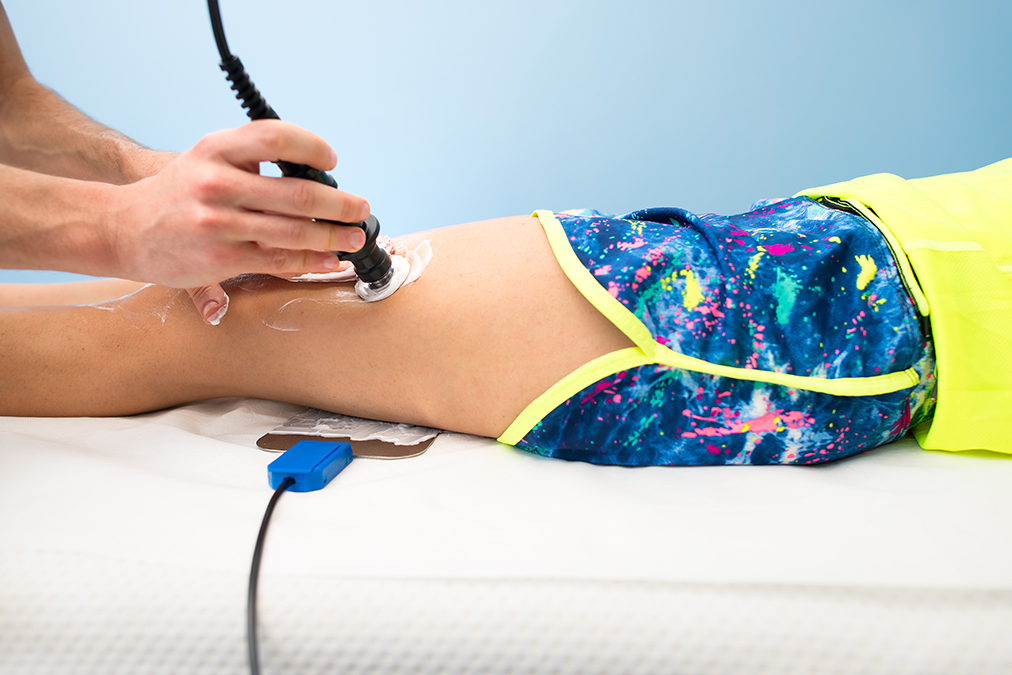 Peripheral neuropathy is characterized by nerve damage, particularly in the lower limbs, and can cause symptoms like pain, numbness, and reduced nerve conduction velocity, significantly impacting the patient’s quality of life.
Peripheral neuropathy is characterized by nerve damage, particularly in the lower limbs, and can cause symptoms like pain, numbness, and reduced nerve conduction velocity, significantly impacting the patient’s quality of life.
In a quest to find effective treatments for this condition, a recent study published by the Turkish Society of Physical Medicine and Rehabilitation revealed astonishing success using a specific electromagnetic therapy.
This method is actually very simple, and you can have it done anywhere in the world. Best of all it’s 100% safe and causes no side effects.
The study, conducted between January and October 2019, involved 24 type 2 diabetic patients (eight males and 16 females) with an average age of 60.4 years.
These participants were divided into two groups: a control group and a study group, each consisting of 12 individuals.
It aimed to evaluate the effects of Tecar therapy, a non-invasive treatment that uses high-frequency electric currents to stimulate tissue repair and relieve pain. Tecar therapy is shown to have an effect on neuropathy symptoms and tibial nerve conduction velocity—a measure of how fast electrical signals travel through the tibial nerve.
Accordingly, participants in the study group received Tecar therapy with an intensity between 10 and 30% over the course of 10 sessions. The control group underwent the same protocol, but with zero intensity, effectively making it a sham treatment.
The researchers assessed the neuropathy symptoms and nerve conduction velocity of the participants at three different stages: at the beginning of the study, after completing 10 sessions, and six weeks post-treatment.
The results were revealing.
Initially, there were no significant differences between the groups, indicating that the participants were comparable at the study’s start.
However, as the treatments progressed, the improvements in neuropathy symptoms in the study group were significantly greater than those in the control group at all stages of the evaluation.
-
1. After the completion of 10 sessions, both groups showed significant improvement in neuropathy symptoms and tibial nerve conduction velocity. However, the improvements were more substantial in the study group.
2. Six weeks after the end of the sessions, the study group still showed significant improvements in their symptoms and nerve conduction velocity. In contrast, the control group did not exhibit any long-term changes in these outcomes.
This shows that Tecar therapy could be a viable option for managing neuropathy symptoms as well as restoring some nerve functions affected by diabetes.
Tecar therapy is the painless use of high-frequency electric currents to transfer energy to body tissue. It is already widely used for muscle and joint pain relief and to accelerate healing from sports injuries.

 Overcoming IBD
Overcoming IBD Multiple Sclerosis
Multiple Sclerosis Banishing Bronchitis
Banishing Bronchitis Gum Disease Gone
Gum Disease Gone Overcoming Onychomycosis
Overcoming Onychomycosis Neuropathy No More
Neuropathy No More The Prostate Protocol
The Prostate Protocol Brain Booster
Brain Booster
 Ironbound
Ironbound
 Solution for Shingles
Solution for Shingles
 The Bone Density Solution
The Bone Density Solution
 The Ultimate Healing Protocol
The Ultimate Healing Protocol
 The Parkinson's Protocol
The Parkinson's Protocol
 The Chronic Kidney Disease Solution
The Chronic Kidney Disease Solution
 Overthrowing Anxiety
Overthrowing Anxiety The Fatty Liver Solution
The Fatty Liver Solution The Hypothyroidism Solution
The Hypothyroidism Solution
 The End of Gout
The End of Gout The Blood Pressure Program
The Blood Pressure Program
 The Oxigized Cholesterol Strategy
The Oxigized Cholesterol Strategy
 Stop Snoring And Sleep Apnea Program
Stop Snoring And Sleep Apnea Program
 The Arthritis Strategy
The Arthritis Strategy The Vertigo & Dizziness Program
The Vertigo & Dizziness Program The 3-Step Diabetes Strategy
The 3-Step Diabetes Strategy Hemorrhoids Healing Protocol
Hemorrhoids Healing Protocol The Erectile Dysfunction Master
The Erectile Dysfunction Master Weight Loss Breeze
Weight Loss Breeze The IBS Program
The IBS Program The Insomnia Program
The Insomnia Program The Migraine and Headache Program
The Migraine and Headache Program The Neck Pain Solution
The Neck Pain Solution The Menopause Solution
The Menopause Solution The Ejaculation Master
The Ejaculation Master The TMJ Solution
The TMJ Solution The Acid Reflux Solution
The Acid Reflux Solution The Fibromyalgia Solution
The Fibromyalgia Solution The Psoriasis Strategy
The Psoriasis Strategy